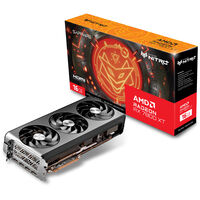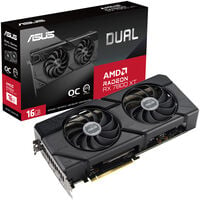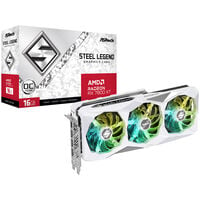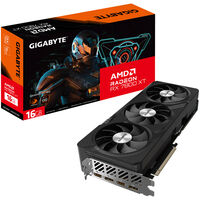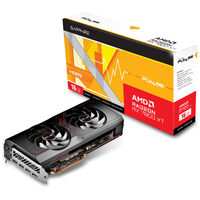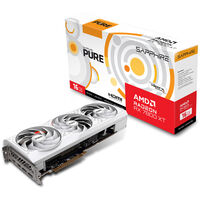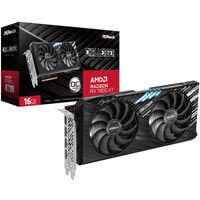Radeon RX 7800 XT
AMD Radeon RX 7800 XT Graphics Cards
The AMD Radeon RX 7800 XT is a high-performance gaming graphics card for gaming and livestreaming in WQHD and 4K resolution. AMD's new gaming GPU was introduced at the end of August 2023 during Gamescom 2023 and is aimed at gamers and content creators with high demands on performance and graphics quality. The Navi 32-XL graphics chip of the RX 7800 XT is based on the RDNA3 GPU architecture and is manufactured in a 5nm process. In addition to various gaming technologies, the biggest innovation compared to the second Navi generation is the efficient chiplet layout with a larger memory interface and bandwidth as well as more graphics memory.
Performance data of the AMD Radeon RX 7800 XT graphics card in the reference design:
- Computing power (FP32): approx. 18.7 TFLOPS
- Base clock of the GPU: 1,800 MHz
- Game clock of the GPU: 2,124 MHz
- Boost clock of the GPU: 2,430 MHz
- Graphics memory: 16 GB GDDR6
- Memory clock: 2,430 MHz (effective 19,500 MHz)
- Memory interface: 256-bit
- Memory bandwidth: 624.1 GB/s
- Shader units: 3,840
- TDP of 263 watts
- Power supply: 2x 8-Pin PCIe
- Video outputs: DP 2.1, HDMI 2.1
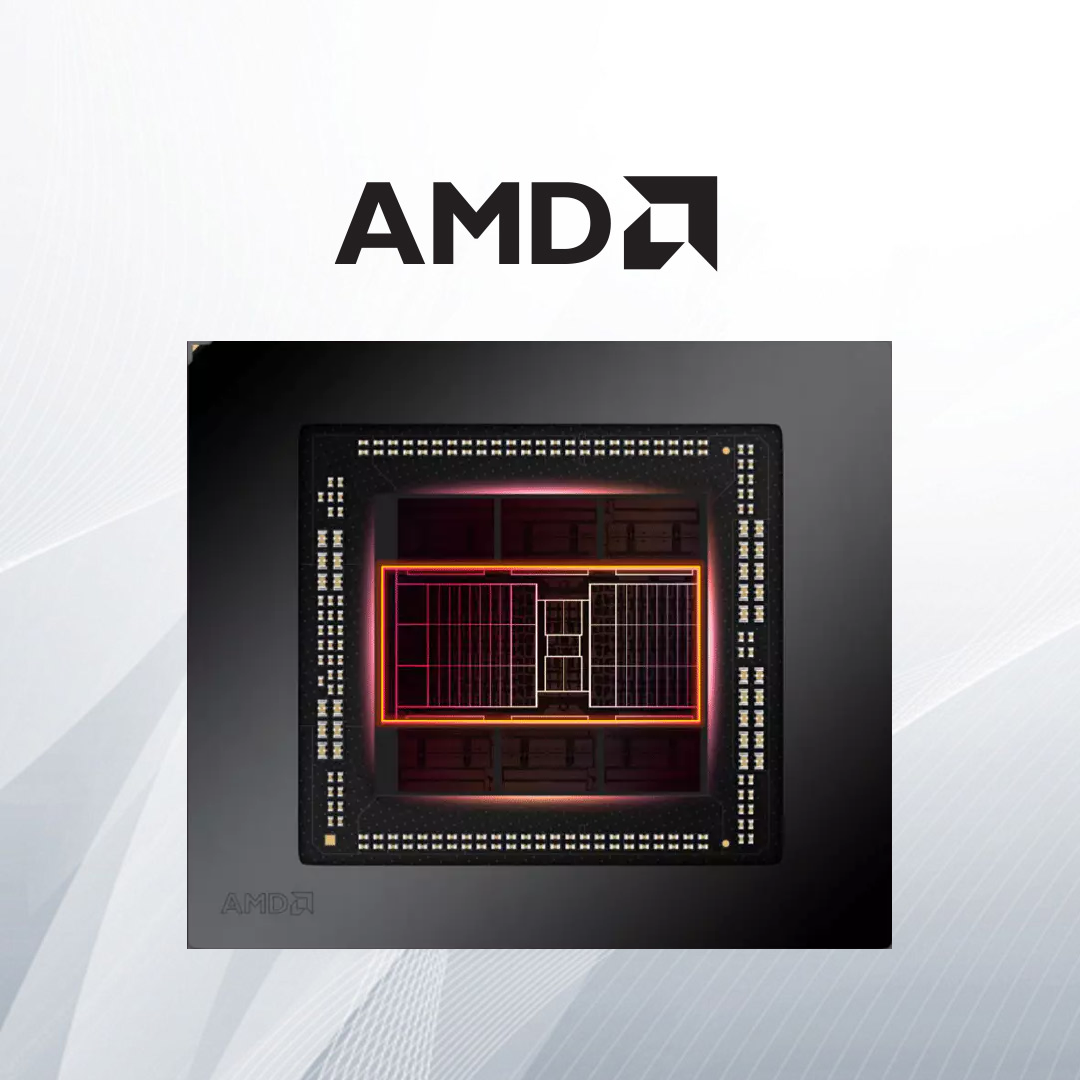
Radeon RX 7800 XT: The RDNA3 GPU Architecture
The Radeon RX 7800 XT is based on the Navi-32-XL graphics chip, which consists of 28.1 billion transistors. The total of 3,840 streaming processors (shader units) are divided into groups of 64 shaders on 60 compute units (CUs). In addition to the 64 shaders, each CU has a "Ray Accelerator" for hardware-based ray tracing, so a total of 60. They also provide more efficient ray tracing in corresponding games.
With the new chiplet design, AMD increases the transistor density by 263 percent. This allows for either higher clock rates with the same power consumption or lower power consumption with the same clock rate. Here, AMD has increased the clock rate while keeping the power consumption at around 263 watts, similar to the predecessor.
The GPU clocks on average with a game clock of 2,124 MHz in games. With particularly high demands on the graphics chip, it can clock up to 2,430 MHz with the boost function.
Infinity Cache & Video Memory
Features of the RDNA3 architecture include, among others, AMD's Infinity Cache, which has been set to 64 MB. The Infinity Cache allows for up to 3.25 times higher effective memory bandwidth. With the 256-bit memory interface and an effective memory clock of 19,500 MHz, this results in a memory bandwidth of up to 624.1 GB/s. This increased memory bandwidth is particularly interesting for gaming in high resolutions.
For video memory (VRAM), AMD uses the GDDR6 standard with a capacity of 16 GB for the Navi-32-XL graphics cards. Thanks to the mentioned Infinity Cache, this ultimately achieves performance that should correspond to the use of faster GDDR6X. This allows AMD to implement a powerful combination of high speed and high capacity on the graphics card without having to resort to the more expensive memory type.
Smart Access Memory
With the Smart Access Memory technology (SAM), AMD promises additional performance when combining a Radeon RX 7000 graphics card with a Ryzen 5000 processor on an X570 or X670 motherboard. SAM utilizes the "resizable BAR" function of the PCIe standard. A corresponding gaming system should benefit from a minimal performance boost. The extent of the performance increase depends on the game and the chosen resolution.
Other Features
Among the many smaller optimizations of the RDNA3 GPU architecture are:
- DisplayPort 2.1 and HDMI 2.1 for 4K gaming at 120 Hertz or more
- Variable Rate Shading (DirectX 12 Ultimate)
- Mesh Shader (DirectX 12 Ultimate)
- Sampler Feedback (DirectX 12 Ultimate)
- AV1 decoding (8K30, 4K60)
- H264 & H.256 decoding/encoding
Ray Tracing & FidelityFX
With the Ray Accelerators, AMD features hardware-based ray tracing. Ray tracing (Microsoft DirectX 12 DXR) enables realistic lighting by simulating physical properties and the behavior of light. Ray tracing calculates the color of individual pixels based on the path the light takes from the user's eye through a 3D landscape.
On its way through the 3D scenery, the light is reflected by objects or creates reflections. At the same time, shadows, transparent or semi-transparent objects are created, resulting in light refractions or distortions. All these effects are combined by ray tracing to represent the final color of a pixel on the monitor.
As a relatively new technology, ray tracing places very high demands on the hardware. With FidelityFX, AMD implements a super-resolution technology to relieve the ray tracing accelerators.
Gaming Technologies
Together with the hardware in the form of graphics cards, AMD offers gaming technologies that aim to provide PC gamers with a better experience. Supported features for gamers include:
- Maximum performance with the Radeon Adrenalin software
- AMD Radeon Anti-Lag
- AMD Radeon Boost
- AMD FreeSync (4K@240Hz, 8K@60Hz)
- Supports HDMI 2.1 VRR
The current AMD RX 7000 graphics cards at a glance:
Want to know which AMD graphics card is right for you? The following list includes all current models of the RDNA-3 generation, sorted by performance starting with the most powerful graphics card.

